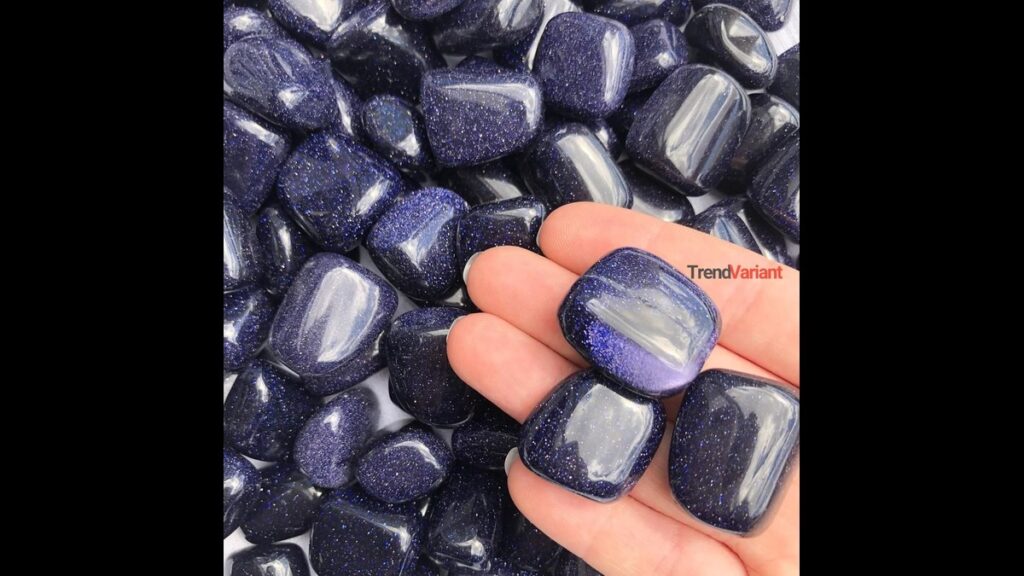Table of Contents
Are you interested in the little-known treasures found on Earth’s crust? One striking gemstone that can pique your interest is blue sandstone, also referred to as blue goldstone. We will explore the world of Blue, Sandstone in great detail in this post, learning about its history, unique qualities, applications, and much more.
Unraveling the Mystery of Blue Sandstone
Blue, Sandstone, often mistaken for a natural gem, is a semi-precious stone with a breathtaking blue appearance. It belongs to the feldspathoid mineral group and finds applications in various industries due to its unique characteristics.
Origins of Blue Sandstone
The intriguing story of Blue, Sandstone begins in the 17th century, when Italian artisans first crafted it. The manufacturing process involves infusing molten glass with copper flecks, resulting in a dazzling, starry effect that imitates the night sky.
The Geological Marvel
Comprising primarily of silicon dioxide and various mineral inclusions, Blue, Sandstone gets its remarkable appearance from elements like feldspar. Cobalt is responsible for the mesmerizing blue hue.
The Enchanting Characteristics
Dazzling Beauty: The standout feature of Blue, Sandstone is its shimmering, star-like appearance, making it ideal for jewelry and ornamental purposes.
Impressive Hardness: With a Mohs hardness rating of 7, Blue, Sandstone proves durable for a wide range of applications.
A Spectrum of Blues: Blue, Sandstone comes in a variety of shades, from deep navy to lighter sky blue.
Versatility and Applications
Blue, Sandstone’s versatility extends to various domains:
Jewelry: It’s a sought-after choice for crafting exquisite jewelry items such as necklaces, earrings, and bracelets.
Decorative Craftsmanship: Its captivating beauty makes it a prime choice for sculpting figurines and statues.
Spiritual Significance: Many believe in the metaphysical properties of Blue, Sandstone and use it for meditation and healing.
The Alluring Appeal
The captivating aesthetics of Blue, Sandstone have captured the hearts of jewelry enthusiasts and spiritual practitioners alike. Its sparkling, calming attributes make it a symbol of serenity and allure.
Caring for Blue Sandstone
To maintain the brilliance of your Blue, Sandstone jewelry or decorative pieces, simply clean them with a soft cloth and avoid exposing them to harsh chemicals or excessive heat.
Exploring Varieties
Navy Blue Sandstone: Noted for its deep blue shade and intense sparkle.
Midnight Blue Sandstone: A darker hue, reminiscent of a starry night sky.
Sky Blue Sandstone: A lighter shade, equally captivating in its own right.
Global Sources of Blue Sandstone
There are numerous locations across the globe where one can locate blue, sandstone, with Europe, China, and India having the largest deposits. Additionally, purchasing it online and at jewellery stores is simple.
Blue Sandstone in Culture
Throughout history, Blue, Sandstone has been associated with positive energy and vitality. It has played a role in cultural and spiritual ceremonies, believed to bring good fortune and prosperity.
Eco-conscious Considerations
Thanks to its synthetic origin, Blue, Sandstone does not pose significant environmental concerns. However, responsible sourcing and ethical practices should always be a priority when working with any gemstone.
A Beautiful Conclusion
In the realm of semi-precious gemstones, Blue, Sandstone shines with its captivating beauty and adaptability. Whether you’re a jewelry enthusiast, a collector, or someone seeking serenity, Blue, Sandstone offers a world of possibilities. Embrace its unique allure and bring a touch of the night sky into your life.
FAQs About Blue Sandstone
Is Blue, Sandstone a naturally occurring gemstone?
No, Blue, Sandstone is a synthetic gemstone crafted by Italian artisans in the 17th century.
What gives Blue, Sandstone its distinctive blue color?
The enchanting blue hue is achieved through the infusion of cobalt during the creation process.
Can Blue, Sandstone be used for healing and spiritual purposes?
Many individuals believe in its metaphysical properties and utilize it for meditation and healing.
Where can one find Blue, Sandstone?
Blue, Sandstone is commonly found in regions like India, China, and various European countries, and is also available in online and brick-and-mortar jewelry stores.
Is the production of Blue, Sandstone environmentally friendly?
Blue, Sandstone’s synthetic nature minimizes environmental concerns, but it’s essential to prioritize ethical sourcing and sustainable practices.










